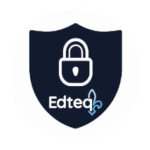Le 16 janvier dernier, le Ministère de l’éducation et de l’enseignement supérieur (MÉES) présentait lors d’un webinaire le Guide pédagogique et le Continuum de développement de la compétence numérique, deux nouveaux outils ayant le mandat d’opérationnaliser le Cadre de référence de la compétence numérique.
Soutenir le développement des élèves… mais aussi des enseignants
La compétence numérique et tout ce qui l’entoure suscitent un engouement toujours aussi soutenu, comme souligne d’entrée de jeu Danielle Boucher, consultante en gestion de l’éducation et animatrice de ce webinaire. Elle mentionne que plus de 900 personnes se sont inscrites à la présentation et qu’elle voit de plus en plus de démonstrations concrètes de la compétence numérique en salles de classe à travers les réseaux sociaux.
À cet effet, plusieurs exemples ont été partagés pendant ce webinaire, tels que :
- l’école Paul-Jarry (CSMB), qui développe la deuxième dimension de la compétence à travers un curriculum de programmation du préscolaire à la 6e année
- le Cégep de Thetford, qui utilise la réalité virtuelle en santé et sécurité au travail en lien avec la troisième dimension;
- des classes d’élèves TSA qui développent la huitième dimension de la compétence numérique avec le robot humanoïde NAO pour améliorer leurs habiletés sociales.
Rappelons que la compétence numérique en éducation se décline en 12 dimensions, décrites dans le Cadre de référence :
- Agir en citoyen éthique à l’ère du numérique
- Développer et mobiliser ses habiletés technologiques
- Exploiter le potentiel du numérique pour l’apprentissage
- Développer et mobiliser sa culture informationnelle
- Collaborer à l’aide du numérique
- Communiquer à l’aide du numérique
- Produire du contenu avec le numérique
- Mettre à profit le numérique en tant que vecteur d’inclusion et pour répondre à des besoins diversifiés
- Adopter une perspective de développement personnel et professionnel avec le numérique dans une posture d’autonomisation
- Résoudre une variété de problèmes avec le numérique
- Développer sa pensée critique à l’égard du numérique
- Innover et faire preuve de créativité avec le numérique
Ces dimensions s’inscrivent dans un développement continu, autant du côté du personnel enseignant que des élèves. C’est dans l’optique de donner des balises et des pistes à ce développement que le MEES a mis sur pied deux nouveaux outils : le Guide pédagogique et le Continuum de développement.
Le Guide pédagogique
L’objectif central du Guide pédagogique est d’aider l’ensemble des acteurs du milieu de l’éducation à effectuer des planifications pédagogiques ou à réaliser des projets éducatifs axés sur le développement de la compétence numérique. Cet outil veut faciliter la conception d’activités d’apprentissage qui intègrent une ou plusieurs dimensions de la compétence numérique. On trouve ici le gabarit de planification que propose le MEES. C’est à travers neuf pistes de planification que l’enseignant pourra s’assurer de mettre tous les éléments en place et ainsi favoriser la réussite des apprenants. Comme les douze dimensions s’intègrent dans l’ensemble des disciplines, il est alors possible d’enrichir n’importe quelle intention pédagogique préalablement déterminée et, ultimement, de redéfinir une tâche grâce au numérique (voir à cet effet le modèle théorique SAMR).
Par exemple, une situation de communication orale en français pourrait être planifiée à travers la création d’une baladodiffusion diffusée via la plateforme Anchor. Les apprenants auraient donc à collaborer (dimension 5), à communiquer (dimension 6) et à produire du contenu (dimension 7) avec le numérique tout en développant la compétence disciplinaire « communiquer oralement ».
L’ÉCOLE BRANCHÉE VOUS PROPOSE… Vous cherchez des activités d’apprentissage interdisciplinaires qui intègrent les dimensions de la compétence numérique? Nous vous invitons à découvrir les guides pédagogiques SCOOP!, dont c’est le mandat précis.
Le Continuum de développement
Quant à lui, le Continuum de développement sert concrètement à situer, sur une matrice de progression, les 12 dimensions de la compétence numérique. Fort de trois niveaux de maîtrise, il contribue à l’opérationnalisation du Cadre de référence de la compétence numérique en spécifiant des comportements, des situations ou des contextes précis pour les apprenants débutants, intermédiaires et avancés. De ce fait, on retrouve dans le Continuum une description de chacun de ces niveaux, permettant ainsi d’élaborer les activités d’apprentissage en tenant compte des attentes du niveau actuel des élèves, toujours dans une perspective évolutive (tendre vers un niveau supérieur).
Le Continuum est structuré de sorte que chaque élément des 12 dimensions correspond aux comportements ou aux attitudes attendus dans chacun des niveaux. Voici, à titre d’exemple, la progression de la dimension 3 de la compétence numérique :
De plus, pour chacune des dimensions, le Continuum fournit des exemples de thèmes à aborder dans vos planifications. Ici, pour la dimension 3, nous retrouvons les encyclopédies en ligne, les outils et ressources numériques d’aide à l’écriture, les logiciels et applications de bureautique, les jeux et applications d’apprentissage, la réalité virtuelle et réalité augmentée, la rétroaction active, les formations et cours en ligne, les classes inversées et l’apprentissage autonome.
Un outil diagnostic à venir
Le webinaire s’est conclu sur l’annonce de la venue prochaine d’un nouvel outil diagnostic utilisant l’intelligence artificielle pour déterminer le niveau de maîtrise des apprenants au regard de la compétence numérique. Grâce à des parcours personnalisés combinant jeux et système de badges, l’intelligence artificielle sera en mesure de proposer des activités adaptées aux élèves afin d’indiquer où ils se situent dans le continuum de la compétence numérique. Cet outil très prometteur est attendu en mai 2020.
***
Pour voir ou revoir le webinaire sur le Continuum de développement de la compétence numérique et le Guide pédagogique, c’est ici :
En terminant, voici de nouveau les ressources mentionnées dans cet article :
- Cadre de la compétence numérique
- Guide pédagogique
- Continuum de développement
- Gabarit de planification
- Guides pédagogiques SCOOP!
Voici aussi une compilation des ressources partagées par les participants via le clavardage lors du webinaire, effectuée par le BMOPAN.
MEES
- Cadre de référence
- Guide pédagogique (sur le site du ministère)
- Continuum (sur le site du ministère)
Matériel pédagogique
- RÉseau PédagoNumérique
- Service national du RÉCIT à l’éducation préscolaire
- Guides pédagogiques – École branchée
- RÉCIT national – adaptation scolaire
- RÉCIT – Croquis-note en univers social
La classe de Valérie et le projet de croquis-note :
Outils contre la désinformation
- 30 secondes avant d’y croire – Lutter contre la désinformation
- Détecteur de rumeurs de l’Agence Science-Presse (ateliers et ressources)
- Centre canadien d’éducation aux médias et de littératie numérique
- FAUX que ça cesse
Éléments théoriques
Conseillers pédagogiques
Autres




 Recevez l'Info #DevProf et l'Hebdo pour ne rien manquer des nouveautés de l'École branchée!
Recevez l'Info #DevProf et l'Hebdo pour ne rien manquer des nouveautés de l'École branchée!




